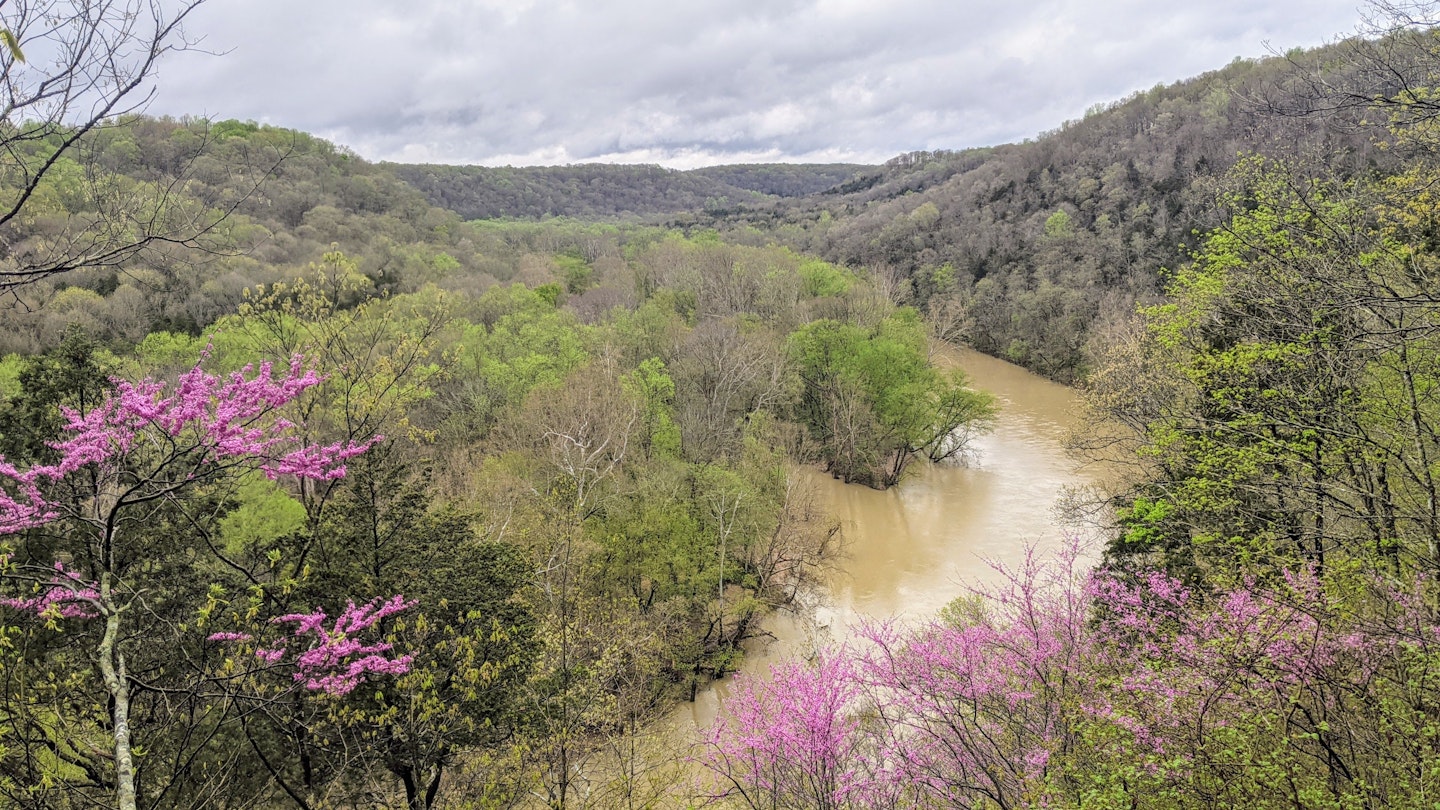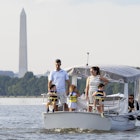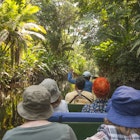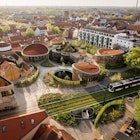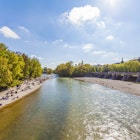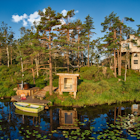The rolling hills of central Kentucky look solid enough where the well-worn foothills of the Appalachian Mountains slide into the flatter, fertile farm land of the Mississippian Plateau. But laced underneath that pretty landscape of telescoping green slopes is a vast network of caves, sink holes, and underground creeks that stand in stark contrast to the sunny spreads of spring wildflowers like trillium, dwarf iris, trout lily, and phlox above ground. And one of those caverns is Mammoth Cave, the longest cave system anywhere in the world.
Humans have been exploring Kentucky's hidden depths for over five thousand years. Down here in the dark, there is evidence of the first intrepid visitors to what is now known as Mammoth Cave, who carried burning reed torches into winding, unmapped passageways. Now scientists have determined Mammoth Cave extends for over 400 miles. It winds down in numerous layers carved over millions of years by trickles and torrents of water making their way to join the wide Green River.
These days, you don't need torches to see the upper reaches of Mammoth Cave, now softly lit by electricity, punctuated by park rangers ready to explain the cavern's many features, and the sometimes unusual ways the cave has been used since the arrival of European settlers in the 1700s.
Editor's note: During COVID-19, please check the latest travel restrictions before planning any trip and always follow government health advice. Events may be subject to change.
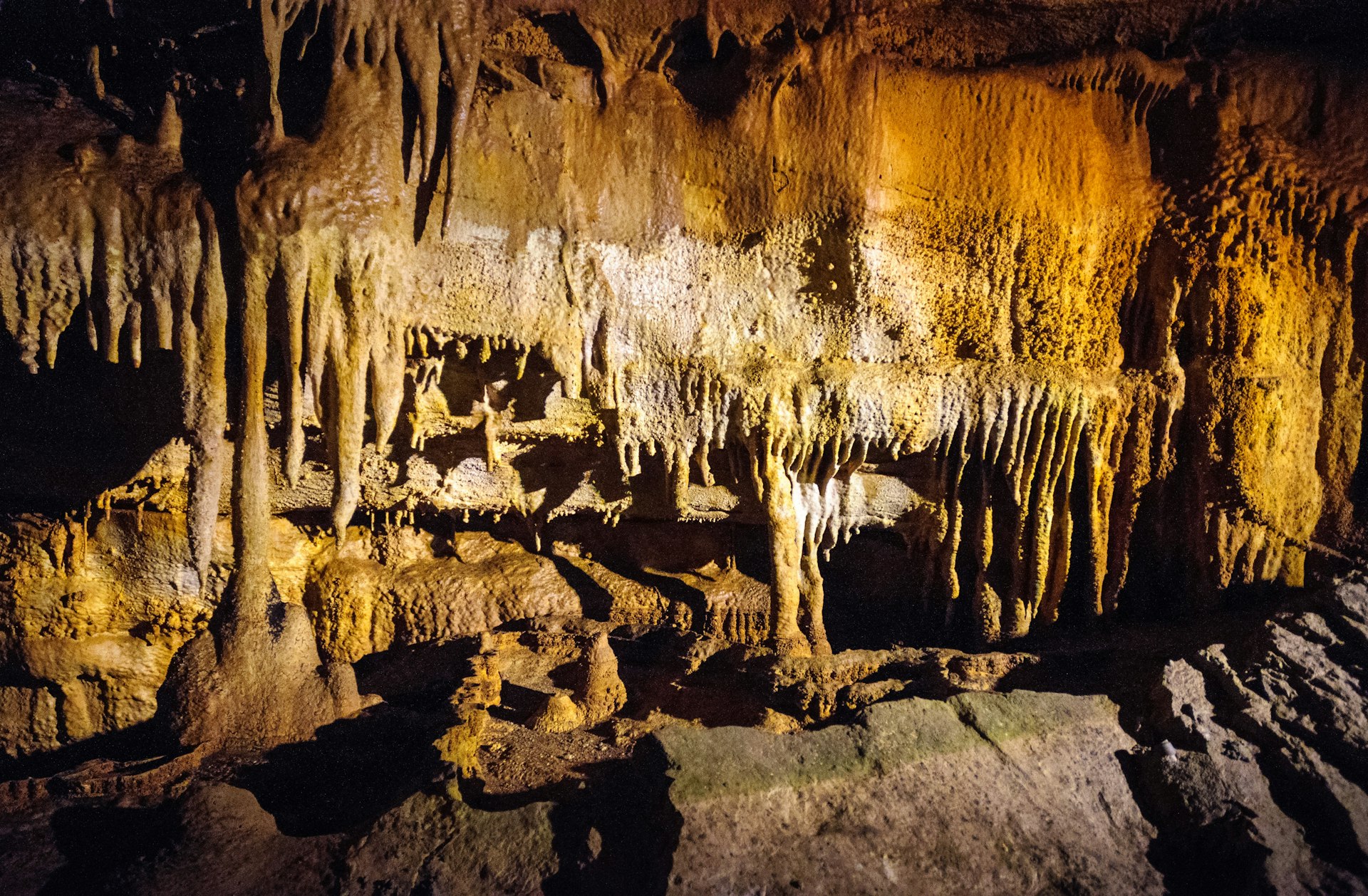
Mammoth Cave history
Legend has it that a bear hunt is what lead the first non-Indigenous person to the entrance of Mammoth Cave, which sits at the end of a long-eroded creek bed that now mostly runs dry. The water that ordinarily would flow here instead works its way down into the cave through tiny cracks in the earth and the sandstone below it, carving the tunnels below from limestone deposits created millions of years ago, when the Appalachian Mountains were new and jutted into a shallow inland sea that covered much of the southeast. Eventually, a sinkhole collapsed at the thin intersection of the creek bed and the cave mouth, revealing Mammoth to whoever passed by.
While it's unclear if it was the hunter chasing the bear or the other way round (or if the incident even happened) what is confirmed is that Mammoth Cave was first seen not as a natural wonder, but a manufacturing resource by the man who purchased the land in time for the war of 1812. Dozens of enslaved people were tasked with hauling tons of dirt into huge vats in the cave, where natural lime could leach from the stone walls and eventually be used in the manufacture of saltpeter needed by the young United States' military to make gunpowder.
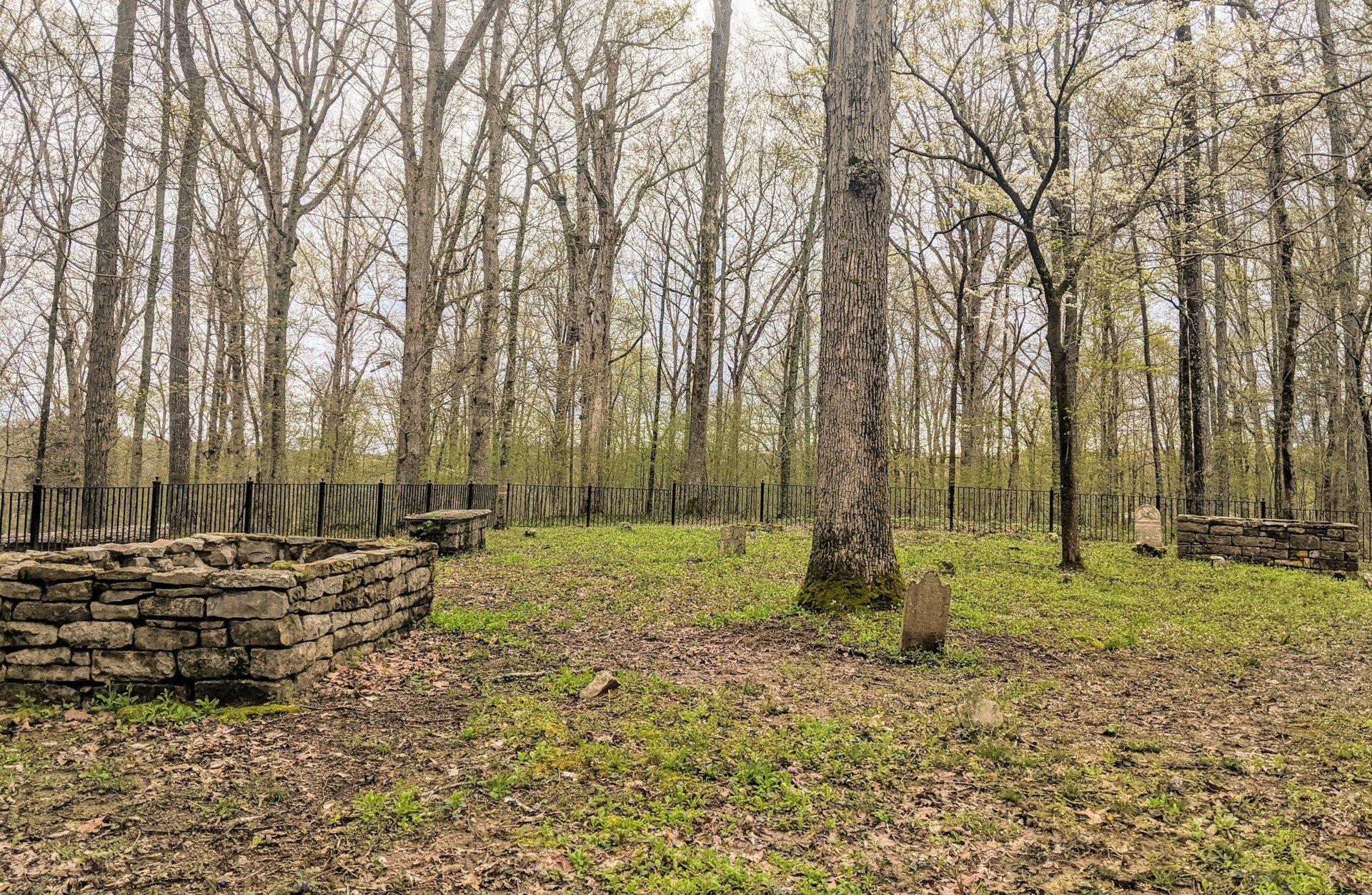
After the war was over the cave changed hands again and the new owner saw an opportunity to capitalize on affluent travelers' growing interest in outdoor recreation. Enslaved guide Stephen Bishop was the first to create a contemporary map of large swaths of the cave, and the names he gave many of the cave's features are still in use today. Bishop worked with Materson Bransford, Nick Bransford, and Alfred Croghan to lead early tourists past the old earthworks and other unusual businesses that had cropped up in Mammoth Cave, including a mushroom farm and a failed tuberculosis clinic.
The Bransfords and their descendants carried on the guiding trade long after they, Bishop and Croghan were emancipated and well into the 1930s. However, when Mammoth Cave was turned into a national park in the 1940s, the four-generation tradition of Bransfords working in the cave came to a close. The family guides were replaced by park rangers until 2004, when Jerry Bransford joined the NPS staff as the fifth generation of his family to lead tours in Mammoth.

Visiting Mammoth Cave National Park
Unlike many other national parks, you don't need to pay admission or flash your America the Beautiful pass to enter the park or enjoy its trails. The only fees you'll need to pay are if you're camping, staying in the lodge, want to reserve a picnic shelter, or to tour the cave itself. It's wise to book your cave tour at the same time you're making any other reservations in the park, as tours often sell out – especially on weekends, and especially while tour offerings and capacity are limited due to the COVID-19 pandemic.
The nearest airports are in Nashville, Tennessee (about two hours away) and Lousiville, Kentucky (about an hour and a half away). Bowling Green, Kentucky is about half an hour away – a college town with restaurants, bars, a new brewery, and the vibrant, historically Black Shakerag neighborhood. Scattered nearby throughout central Kentucky are several of the state's famous bourbon distilleries. Just eight miles from Mammoth Cave is Cave City, whose quaint mid-century main street is lined with antique shops. Stop for a beer at The Dive, an atmospheric watering hole full of long-time locals.
Peak season at Mammoth Cave matches the summers in central Kentucky, which tend to be warm and humid, with highs in the 70s and 80s. Fall and spring are mild and cool, and winters see temperatures hovering in the 30s and 40s. Temperatures inside Mammoth Cave itself, though, are consistently around 54 degrees no matter the time of year or weather. Even when it's raining outside (spring is the wettest month in central Kentucky), Mammoth Cave will be dry, however – at least the part open to visitors.
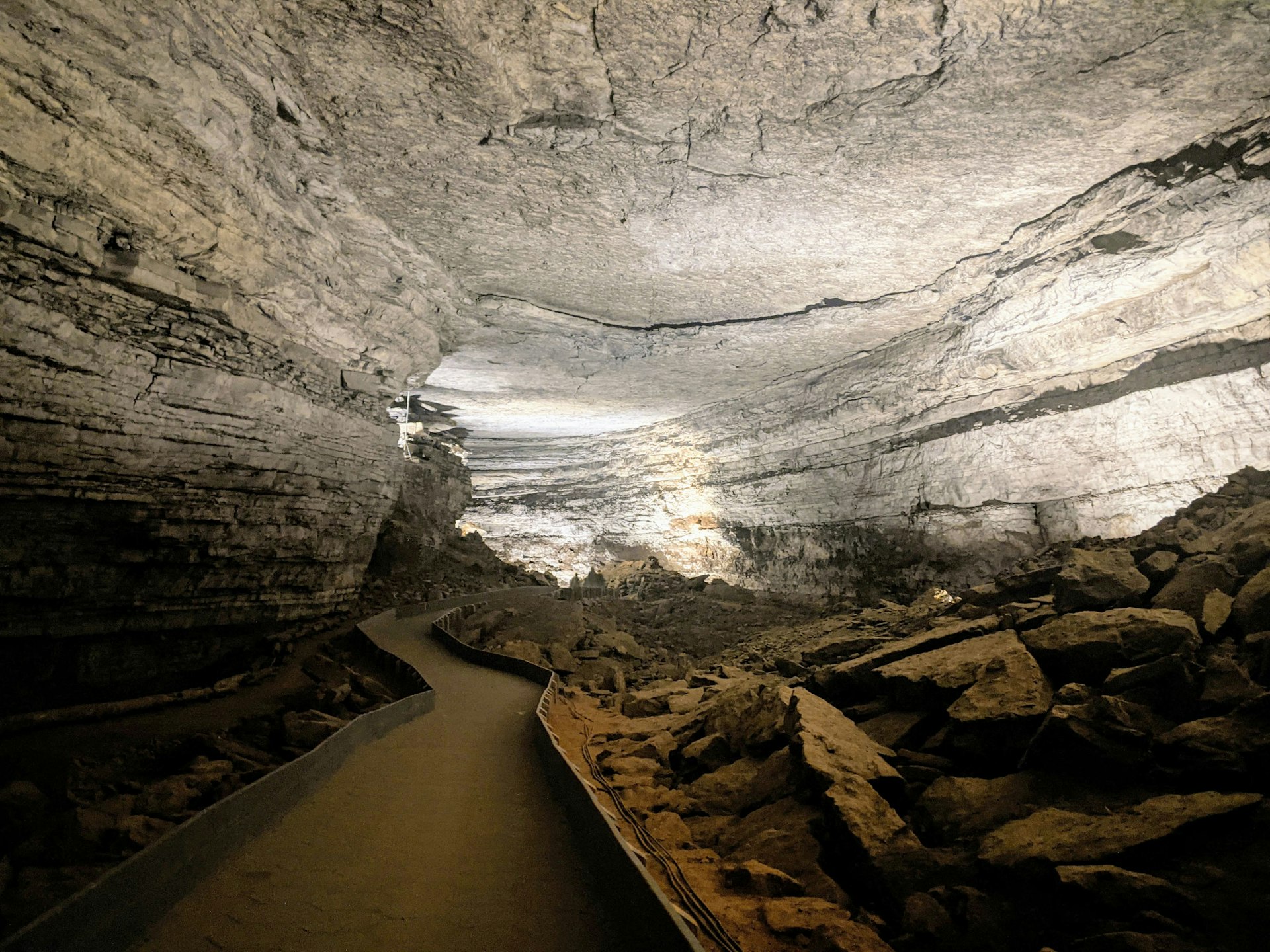
Activities near Mammoth Cave
Cave tours
When the COVID-19 pandemic isn't raging, there's usually several cave tours on offer that go to different areas of the cave and showcase different features, from The Rotunda to a formation known as Frozen Niagara. Most of the tours go a quarter of a mile to two miles into the cave, and some involve staircases or some challenging climbs. There are also special holiday-themed events that have been offered in years past, including caroling around Christmastime. Many of the tours depart from one of two outdoor pavilions close to the visitor center before entering Mammoth through the Historic Entrance.
Currently, the Historic Extended tour is what's on offer with limited capacity. This self-guided experience gives you the opportunity to go at your own pace and ask park rangers stationed at notable points along the tour route any questions you might have. Notable features included are the Rotunda, the Methodist Church where actual church services were once held, the historic salt peter mining site, Booth’s Amphitheatre (where the brother of the infamous John Wilkes Booth would recipe passages from Shakespeare), and an eerie formation known as the Giant’s Coffin.
Tickets for cave tours can be purchased at the Visitor Center or reserved online and cost $25.
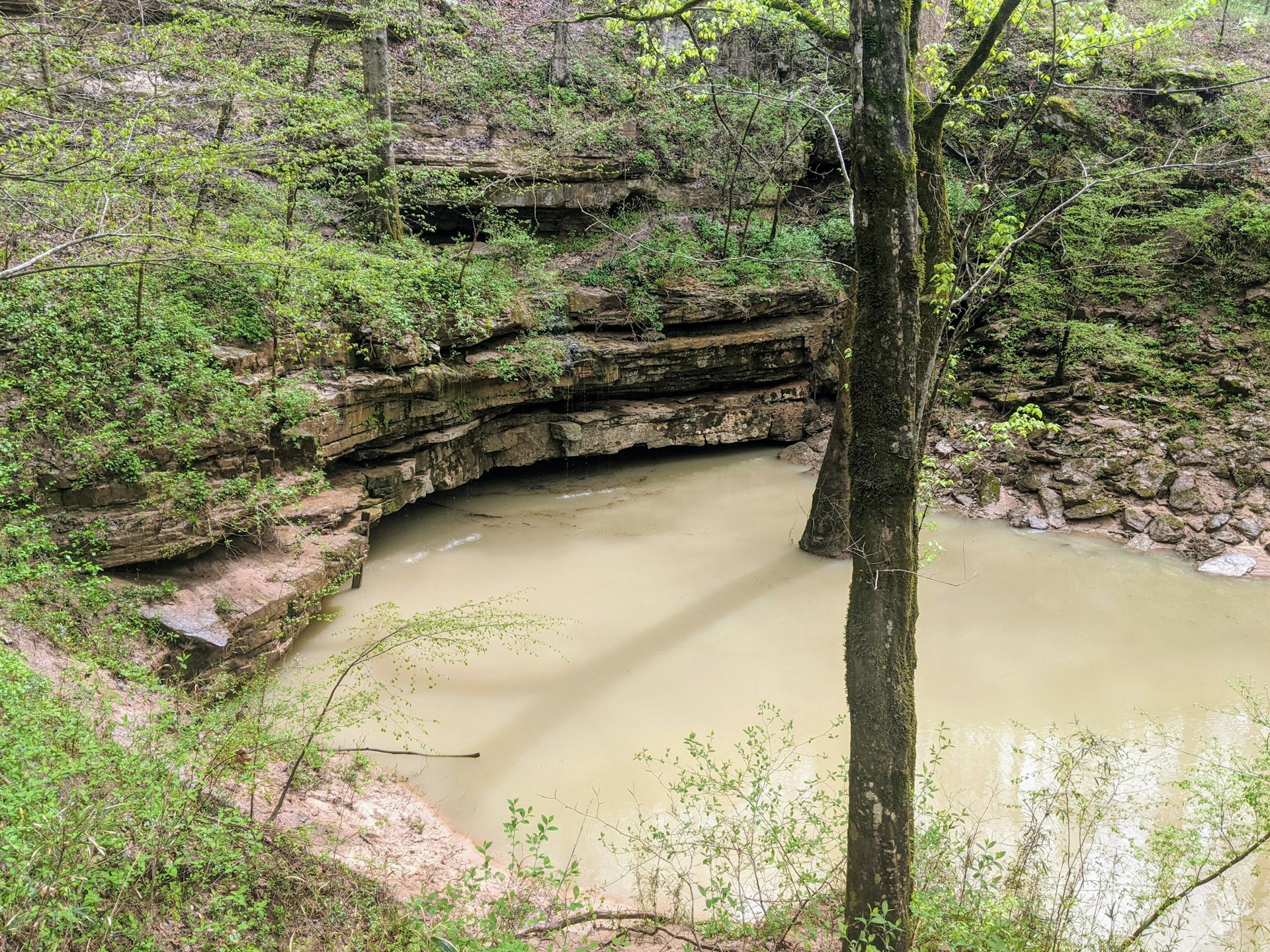
Hiking
There are a number of hiking trails at Mammoth Cave, but those concentrated around the Visitor Center, campgrounds, and picnic pavilions are well-connected, moderately challenging, and can easily be tackled over the course of a weekend – or even combined into various loops for a day hike.
Some like the Cedar Sink Trail, Echo River Spring Trail, and River Styx Trail give you a chance to learn more about the unique geography and hydrology of Mammoth Cave. They lead to spots where water either enters or exits the cave system. Water might enter through a sink (think a big natural drain) like the one surrounding the Historic Entrance, or the Cedar Sink on the side of the ridge under which Mammoth is carved. Water also exits the cave on its way to the Green River through several springs where water bubbles out from under rocks or from beneath ponds not far from the main shore.
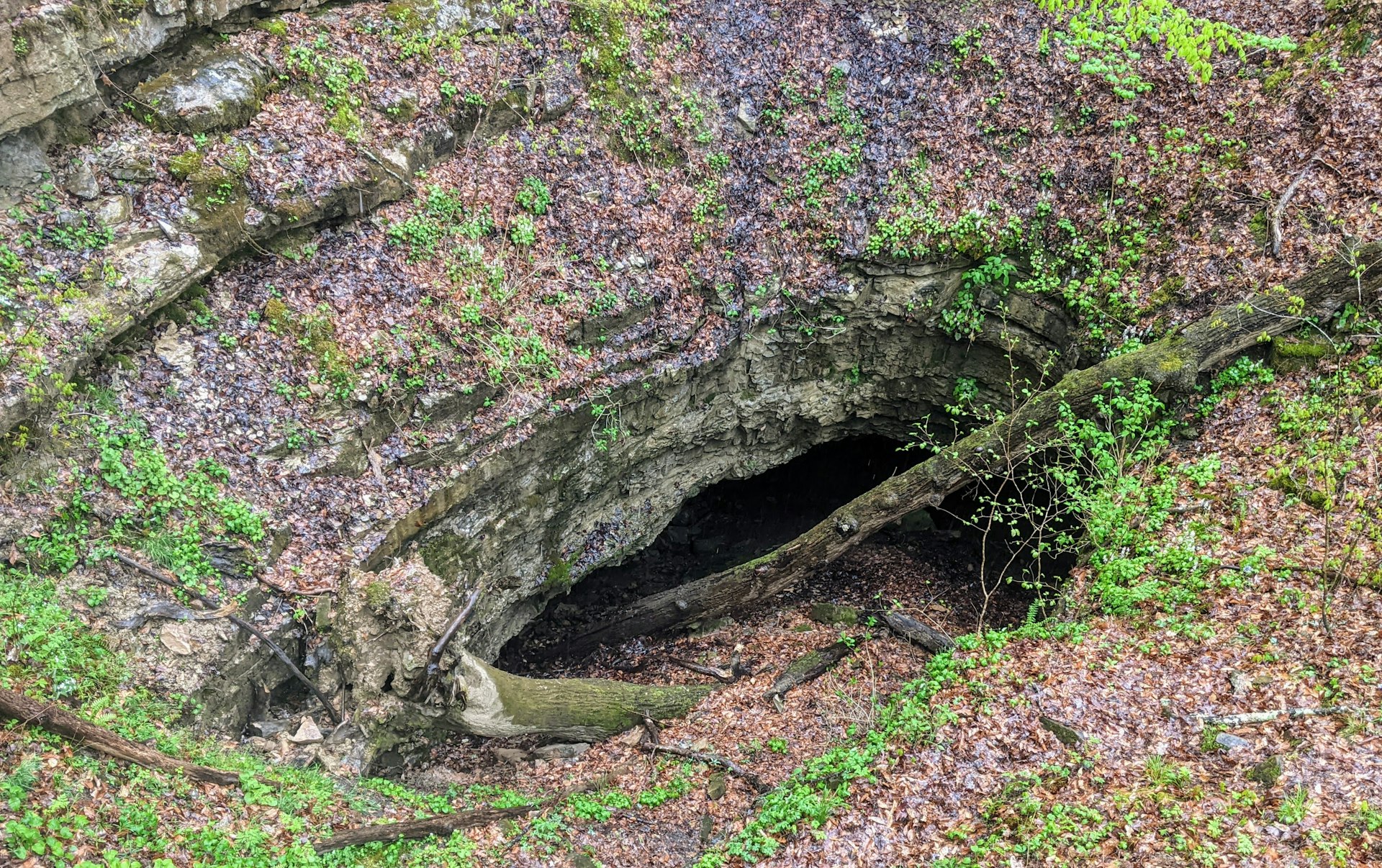
The Dixon Cave Trail Loop climbs to a separate cave system that used to be connected to Mammoth Cave, but was cut off by a rock collapse similar to that which made Mammoth's entrance accessible. There's a wooden platform built to give hikers a good vantage point of the sink surrounding Dixon Cave's entrance, but you cannot enter the cave. That's to protect Dixon's resident bats, who are at risk from white nose syndrome – a disease that isn't harmful to humans, but can be carried by their shoes and clothing and is a severe threat to bat colonies worldwide.
The Green River Bluffs trail connects to several of these shorter jaunts and offers splendid views of the titular river from high on the bluffs down to the bottom of the ridge where paddle wheel steamboats used to dock at the turn of the last century. One of the easiest loops to create with the Green River Bluffs trail is by connecting to the Heritage Trail for a 2.5 mile hike. The Heritage Trail leads to the historic cemetery where Stephen Bishop is buried, along with several other former cave guides, community members, and the tuberculosis patients treated in Mammoth Cave.
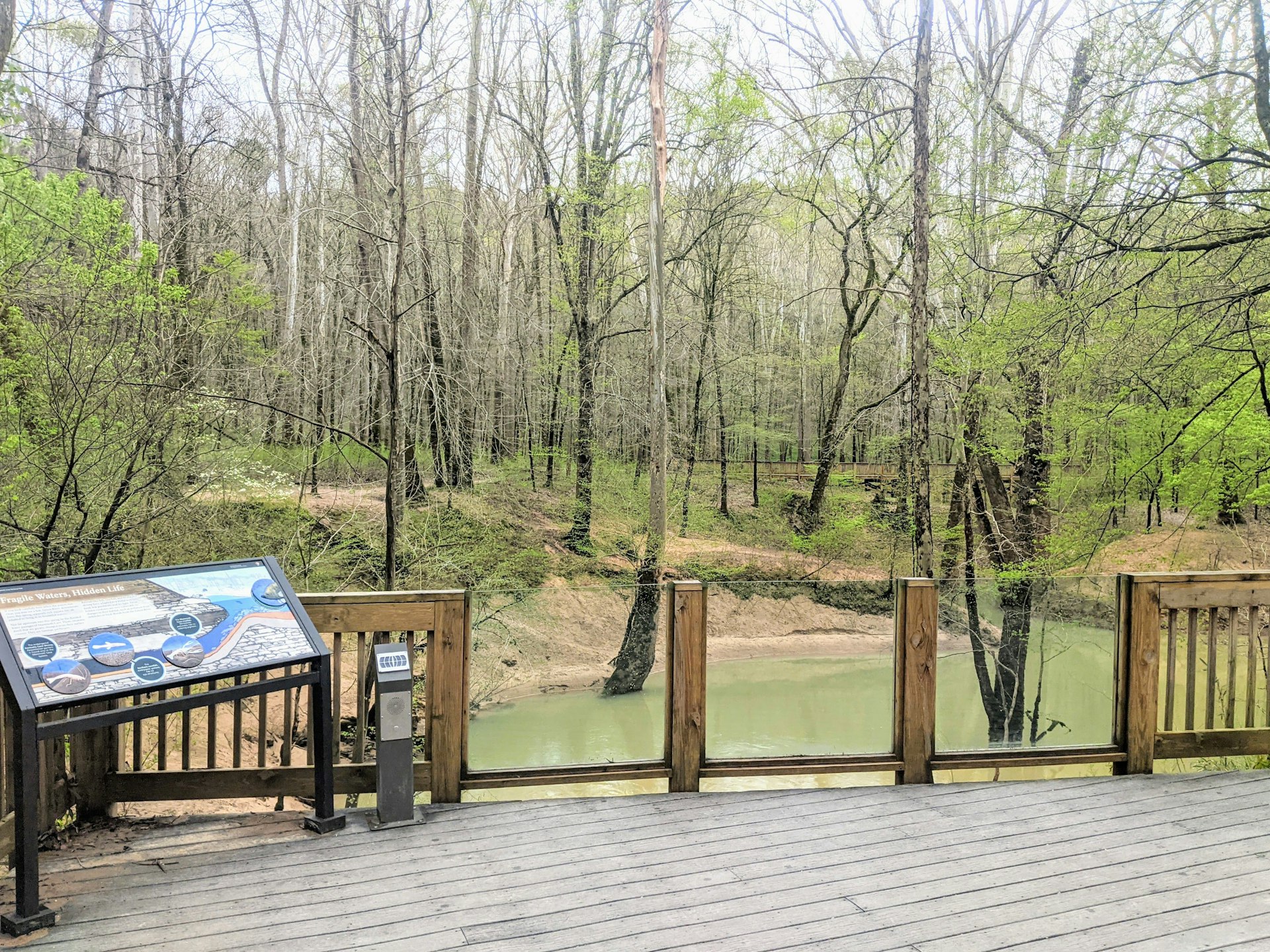
The Echo River Spring Trail has been recently renovated to be more accessible for visitors with disabilities. A portion of the trail has been redesigned as a level, composite boardwalk loop around the Echo River with interpretive features that have tactile elements as well as braille and audio captions. It's part of a longer two mile trail that connects to the Green River Bluffs and Mammoth Sink Hole trails. The new, more accessible section also connects to a recently renovated trailhead that will include a put-in for canoes and kayaks. This trailhead will also be serviced by the Green River Ferry, which has transported vehicles, pedestrians, and cyclists from the south to north shores since 1934.
Cycling
Back in the late 19th century, when the Kentucky Caves wars were just starting to heat up and land-owners were competing to see who could tap into the success of Mammoth Cave as a tourist attraction, a railroad was built to bring travelers into the area. It was in service for almost fifty years before the age of the automobile took over and ferry service began at sites like Green River. Today, nine miles of that old rail bed has been turned into a Railroad Trail, an easy to moderate cycling and hiking route that winds through the park.
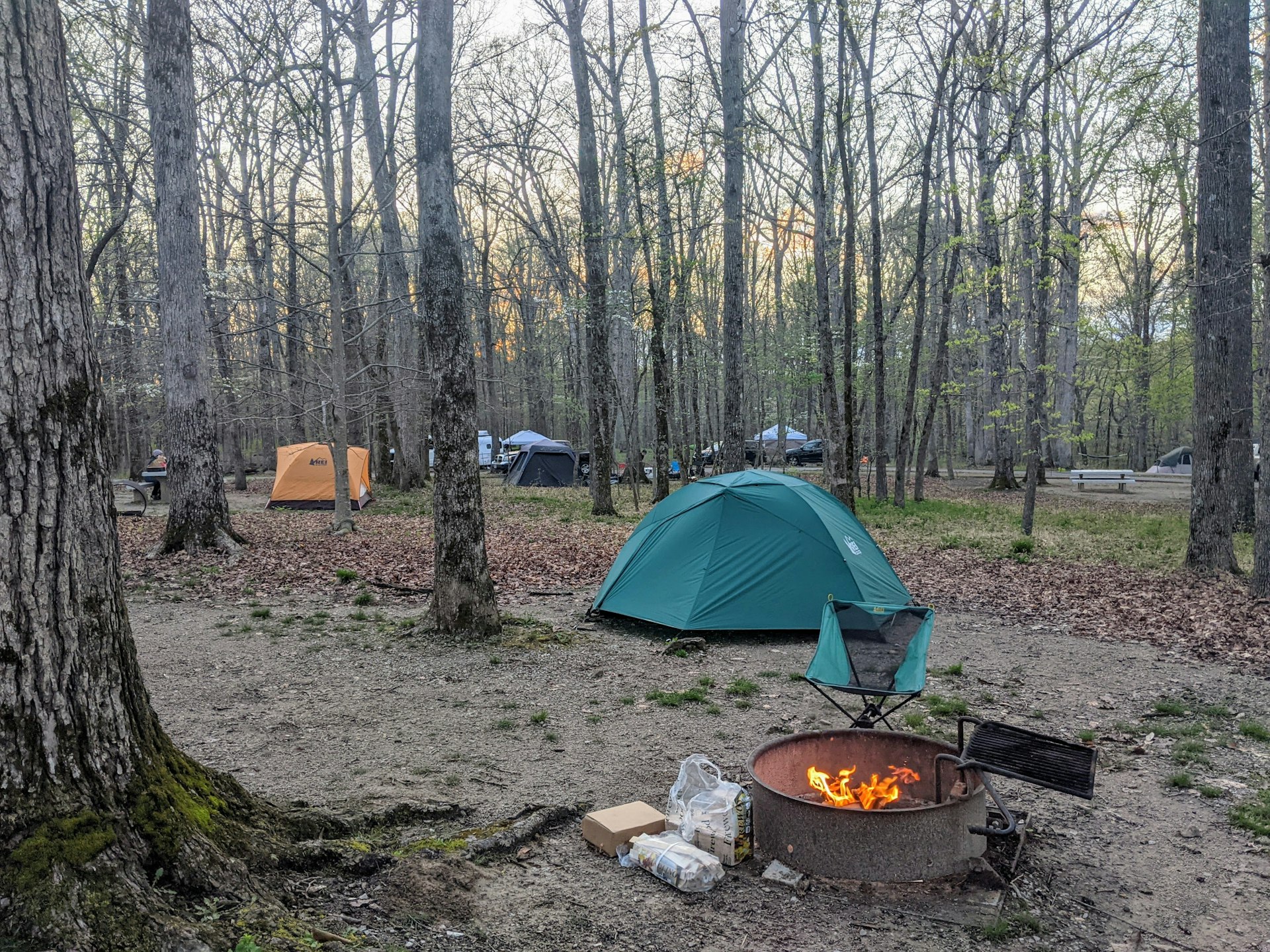
Staying at Mammoth Cave
Camping
There are two primary campgrounds at Mammoth Cave – the main campground and the Maple Springs campground, which caters more to groups, equestrian campers, and those heading into the backcountry. Both feature bathrooms with flush toilets and dumpsters on site. There is also more primitive, tent-only, but still car-accessible camping at Houchin Ferry Campground 15 miles from the visitor center. Backcountry sites are scattered throughout the park, and include some remote island sites only reachable by boat.
You aren't required to have a bear canister in Mammoth Cave National Park, and there aren't bear boxes on site due to low risk. That said, you are advised to keep food in your vehicle overnight to prevent interference from other wildlife. The campsites can accommodate both RV and tent campers, as well as hammock campers thanks to the abundant tree canopy. Due to the threat of the Emerald Ash Borer beetle to trees in the park, campers shouldn't bring firewood with them from neighboring states, but should instead purchase at the camp store or use dead, fallen timber collected on site.
The Caver’s Camp Store has a range of convenience food and beverage items, including takeaway like pizza, coffee, and biscuits and gravy, as well as some camping supplies and souvenirs. There's a post office on site where you can get stamps for postcards from the gift shop or pick up a package. There are also hot showers available. WiFi is available in the Visitor Center and in the Lodge, but cellphone service is limited throughout the park.
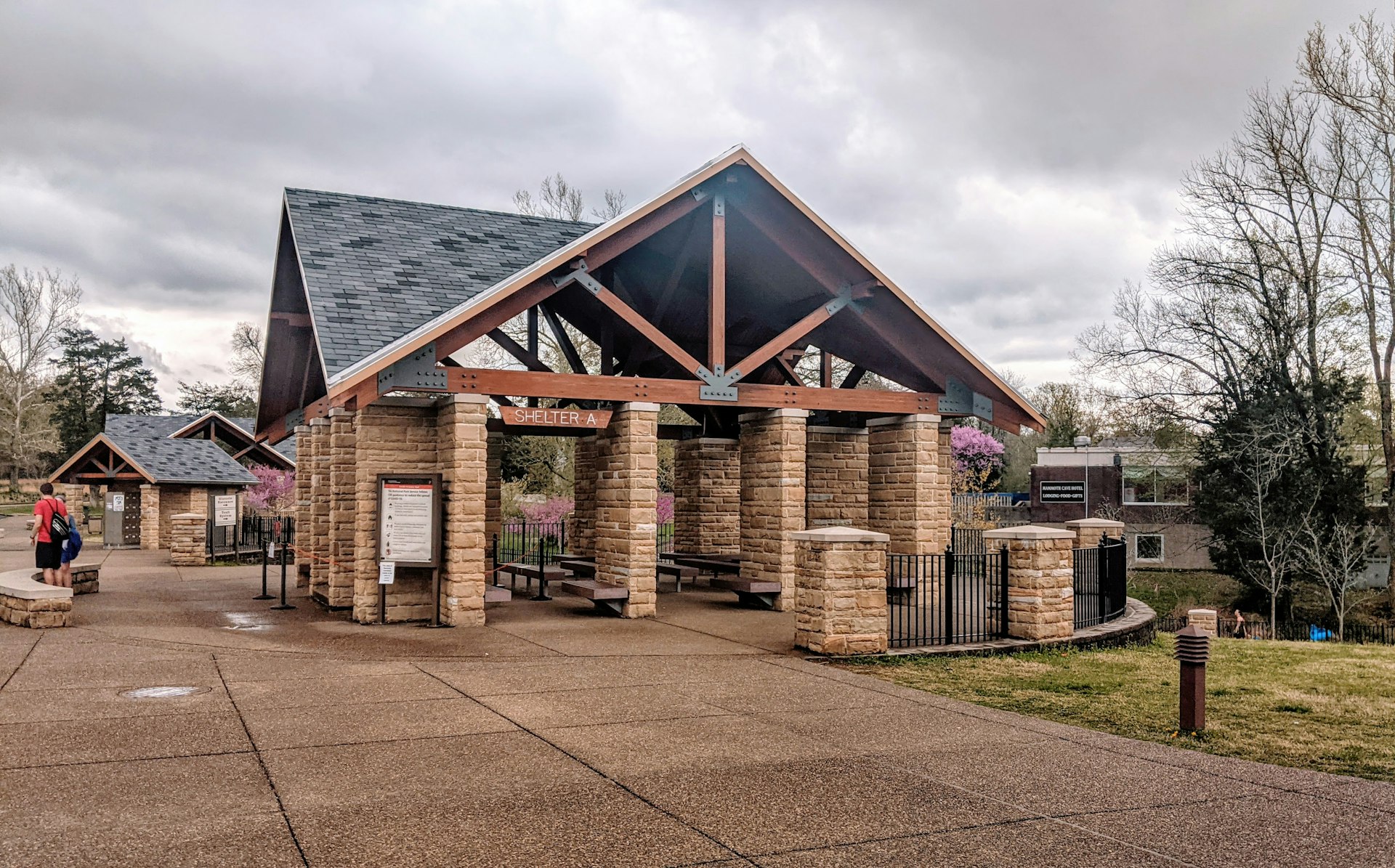
The Mammoth Cave Lodge
The Mammoth Cave Lodge is made up of several different buildings ranging from hotel-style rooms in a 1960s modernist structure to small cottages to an ADA-accessible motor-lodge style space. There are two eateries on site, including a sit-down restaurant called the Green River Grill and the more casual cafeteria-style Spelunkers Café & Ice Cream Parlor, which has takeaway sandwiches, chips and drinks, as well as hot items like burgers on offer. Both make extensive use of local products from Kentucky vendors on their menus.
While the Visitors Center was built in 2012 in a contemporary style that refers back to classic "parksitecture" and is powered by banks of solar panels, recent renovations to the Lodge buildings weren't started until 2017. Thus far, the updates have focused on making Mammoth Cave National Park more environmentally friendly, with outdoor LED lighting, upgrades to waste water treatment, and refreshes to the room amenities, as well as expansions of the concessionaire and gift shops. Since 2019, has been continued expansion of the lodge with new construction, too, as well as continued renovation of the existing rooms.
You may also like: A spirited trip through Kentucky bourbon country
Eight can’t-miss experiences in Kentucky
Under the radar USA: creativity and culture in Paducah, Kentucky
